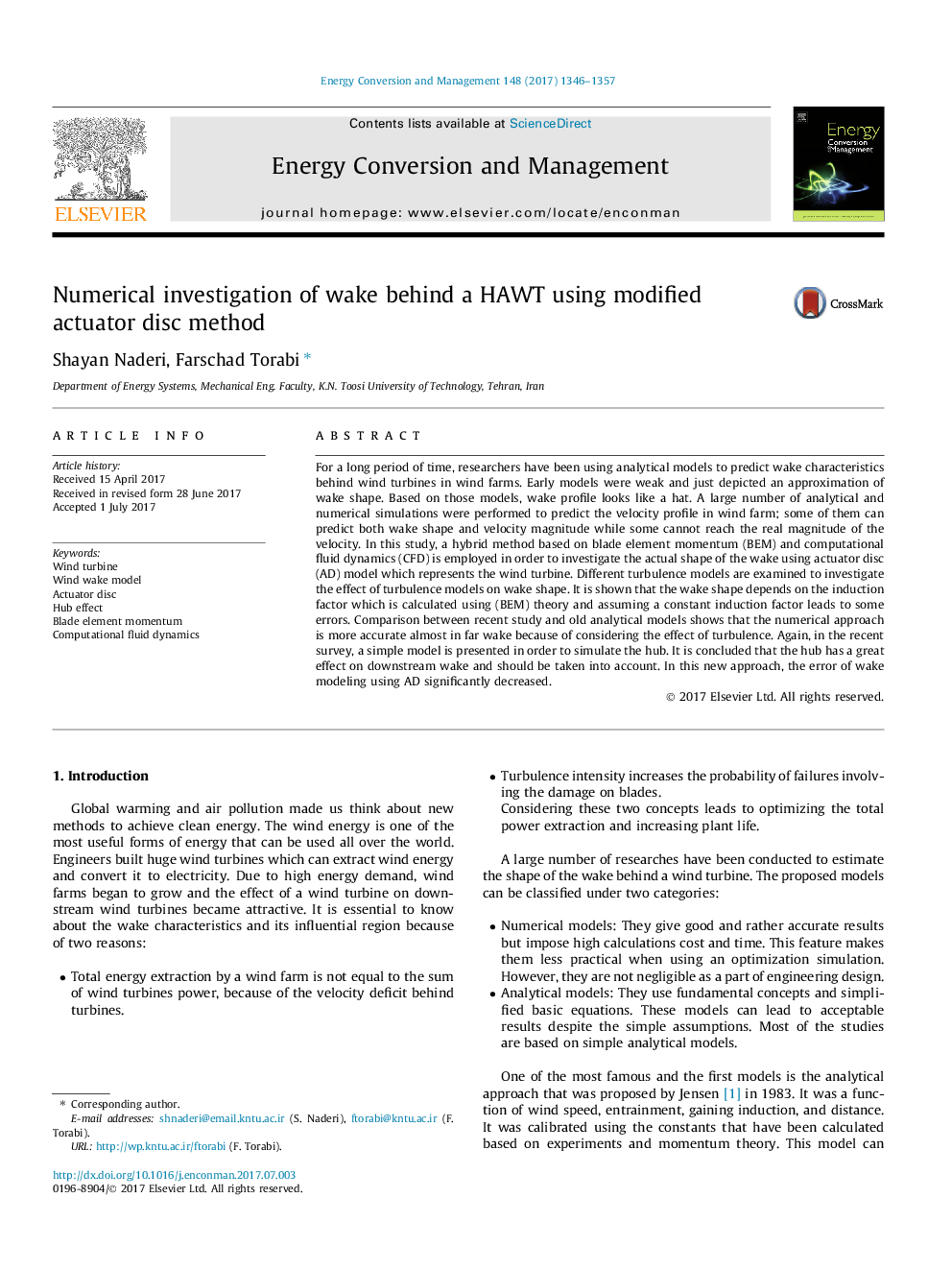| Article ID | Journal | Published Year | Pages | File Type |
|---|---|---|---|---|
| 5012595 | Energy Conversion and Management | 2017 | 12 Pages |
Abstract
For a long period of time, researchers have been using analytical models to predict wake characteristics behind wind turbines in wind farms. Early models were weak and just depicted an approximation of wake shape. Based on those models, wake profile looks like a hat. A large number of analytical and numerical simulations were performed to predict the velocity profile in wind farm; some of them can predict both wake shape and velocity magnitude while some cannot reach the real magnitude of the velocity. In this study, a hybrid method based on blade element momentum (BEM) and computational fluid dynamics (CFD) is employed in order to investigate the actual shape of the wake using actuator disc (AD) model which represents the wind turbine. Different turbulence models are examined to investigate the effect of turbulence models on wake shape. It is shown that the wake shape depends on the induction factor which is calculated using (BEM) theory and assuming a constant induction factor leads to some errors. Comparison between recent study and old analytical models shows that the numerical approach is more accurate almost in far wake because of considering the effect of turbulence. Again, in the recent survey, a simple model is presented in order to simulate the hub. It is concluded that the hub has a great effect on downstream wake and should be taken into account. In this new approach, the error of wake modeling using AD significantly decreased.
Related Topics
Physical Sciences and Engineering
Energy
Energy (General)
Authors
Shayan Naderi, Farschad Torabi,
